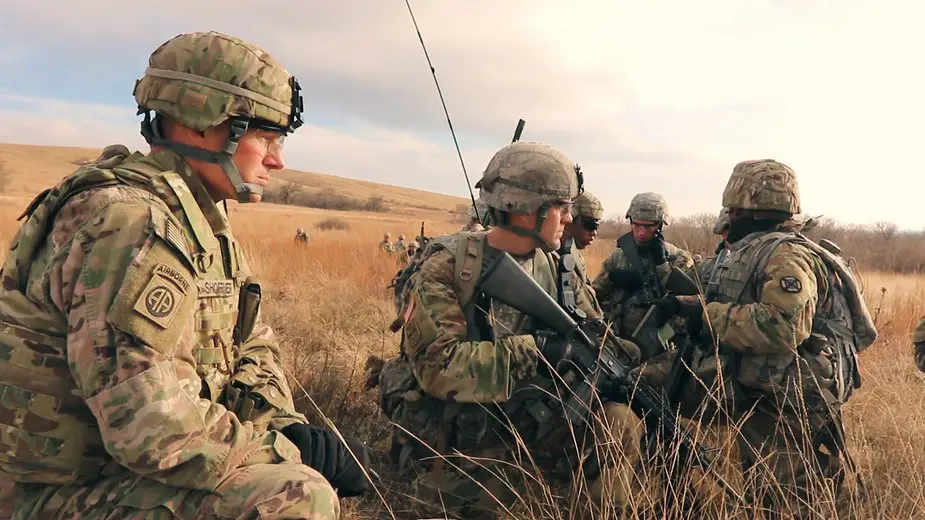U.S. Army: change to leadership course brings officers closer to impact zone
The Field Artillery Basic Officer Leader Course (BOLC) implemented a new change to its capstone exercise, Red Leg War, giving students a more realistic experience before entering their respective units. Daniel Malta, Fort Sill Public Affairs, explains.

Maj. Gen. Wilson A. Shoffner (left), Fires Center of Excellence and Fort Sill commanding general, visits students during Red Leg War to query them on possible improvements to training Jan. 17, 2019, at Fort Sill, Okla. (Photo Credit: Daniel Malta, Fort Sill Public Affairs)
This change now allows students to approach the impact zone while calling in fires during the Fires Support Coordination Exercise. "We want them to have the experience of fires impacting much closer than they have in the past," said Lt. Col. Terry Hilt, 1st Battalion, 30th Field Artillery commander. "They will now be able to potentially walk through the craters as they move from objective to objective. "We have a safety on Dailey Hill counting rounds as the lane [of Soldiers] advances," he said. "We also have an EOD [Explosive Ordnance Disposal] team out there."
If a round doesn't explode and it's in the path of the soldiers, then the lane is stopped and the EOD team takes care of the unexploded ordnance, Hilt said. In the past, after planning, briefing and rehearsing, students had been brought to an observation point where they would call in fires on designated targets. Now, students get to fully realize the effects of that planning by getting as close as 750 meters from impacting rounds, while simultaneously calling in fire from mobile positions.
This also allows students to more realistically adapt their fire commands while moving to contact, and exposes them to the devastating effects of those artillery rounds, Hilt said.


























